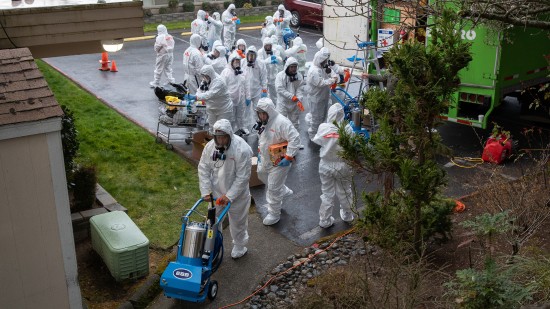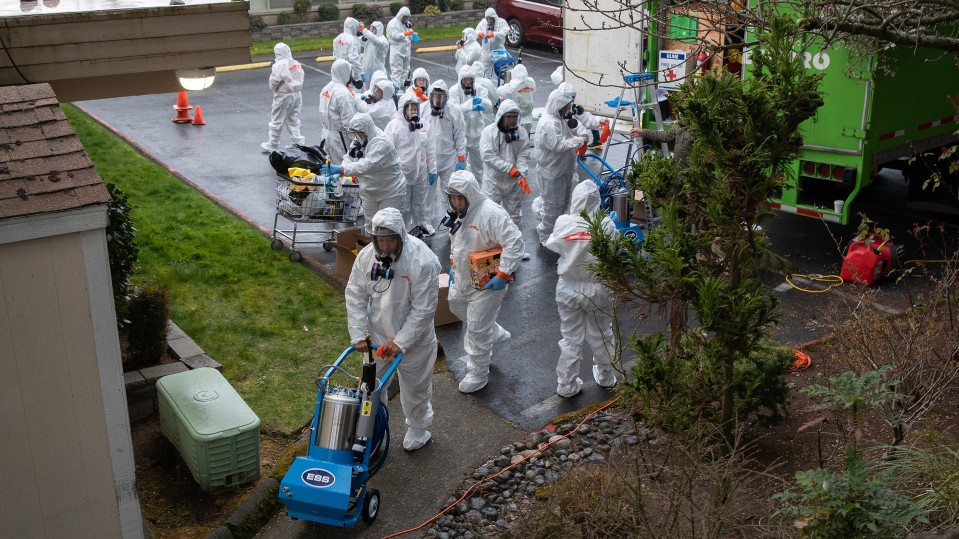Biotechnology
How bad can coronavirus get in the US? We’re about to find out.
The key question right now is how similar the US will be to Italy.



How bad could it get? Washington governor Jay Inslee didn’t mince words on March 10 when he said up to 64,000 people could be infected with the novel coronavirus in his state alone in two months. That would approach the number today in the whole of China, which has some 200 times the population.
For a state with only 162 known cases at the time of Inslee’s remarks, the projection may have sounded dire and unrealistic. But by March 14 the state’s count was at least 642, revealing how confirmed cases can quickly double and double again.
You can read all of our coverage of the coronavirus/Covid-19 outbreak for free, and also sign up for our coronavirus newsletter. But please consider subscribing to support our nonprofit journalism.
To understand what could happen next in the US, consider events in Italy, a country with 21,000 cases and counting—the second largest number after China.
On March 8 an Italian doctor, Daniele Macchini, recounted in a blog post the sense of early calm as hospitals got ready and slowly emptied of elective patients, creating an “an atmosphere of surreal silence and emptiness that we still did not understand.” They were readying for a war that Macchini wasn’t sure would come.
But then, one after the other, the patients began arriving, always with the same diagnosis: bilateral interstitial pneumonia, in which the disease attacks the lung, making it hard to breathe. The intensive care unit quickly filled up. “The war has literally exploded and the battles are uninterrupted day and night,” wrote Macchini. “There are no more surgeons, urologists, orthopedists, we are only doctors who suddenly become part of a single team to face this tsunami that has overwhelmed us. The cases multiply, we arrive at the rate of 15-20 hospitalizations a day all for the same reason. The results of the swabs now come one after the other: positive, positive, positive. Suddenly the emergency room is collapsing.”
The overall fatality rate of Covid-19 is around 3.5%, according to the World Health Organization, though the true number is uncertain because some cases may be asymptomatic. But in Italy it may be higher than 6%. That is partly because Italy has an older population: the infection is about 1,000 times as lethal in a person over 80 than someone younger than 20.
According one report from China, those over 80 have an 18% chance of death.
Macchini ends his post by begging people to stay apart, to stop gathering in order to slow the spread of the disease: “Please share and share the message. We must spread the word to prevent what is happening here in Italy.”
That’s Italy’s story over the last few weeks. Is it America’s story over the next few?
Epidemiologist Marc Lipsitch of Harvard University has been projecting that around half the world population could be infected with the coronavirus within a year. Worst-case scenarios from the Centers for Disease Control and Prevention say there could be 1.7 million deaths in the US, mostly among older people.
So far, doctors know the disease spreads most efficiently among family members and other “close contacts” of infected people. Close means you’re exposed to the infected person, who can cough out virus-laden droplets that end up in the mouth, nose, or eyes of others or on surfaces that people touch. The virus is also present in stool, and that could be another way it is spread.
The rate at which the viral infection spreads depends on intrinsic properties of the germ but also on what kind of chance societies give it to spread. Every virus has what’s called a basic reproduction number (R0, pronounced "R-naught"), a measure of how many additional people one affected person will infect.
Estimates put this number for the coronavirus at between 2.0 and 2.5 (pdf), according to the World Health Organization. But that's only a best estimate. The common flu, by contrast, has an average R0 of 1.3. The most infectious diseases, like measles, have an R0 of more than 10. Nonetheless, small differences in R0 matter. This table shows how fast the virus can theoretically spread from an initial group of five infected people—though in reality the spread would start to slow after a certain number of cycles.
The figure for R0 isn’t fixed, however. The effective rate of spread can be changed by isolating sick people and their contacts. In the case of SARS, the 2003 respiratory outbreak, the germ was ultimately checked completely by such public health measures.
Thus the reproduction number is a useful tool for understanding the most effective practices to slow the virus's spread. It's a way to calculate, for example, how extensive and extreme social distancing must be. If you can cut the transmission rate by more than half, you have effectively stopped the spread.
In areas where the coronavirus is spreading unchecked and testing is still catching up, the number of confirmed cases is doubling exponentially, and as often as every two days as they did the past week in Washington. Once measures are taken to reduce spread, however, the doubling time can be dramatically slowed. In Japan, for example, cases have doubled every 10 days instead.
To avoid a crisis at overwhelmed hospitals, health authorities say it’s essential to slow the spread—what has become known as "flattening the curve." While in the end most people might still get infected, spreading the problem out over time will save lives, because it will allow people to get the best care. Countries struggling with a burst of cases, like Italy, have much higher death rates, as hospitals fill up their intensive care units and run short of the equipment, like ventilators, needed to treat the critically ill.
Slowing the spread of the coronavirus is done by detecting people who are infected and sending them and their close contacts into self-quarantine. The public at large can help through social distancing—avoiding gatherings and staying home.